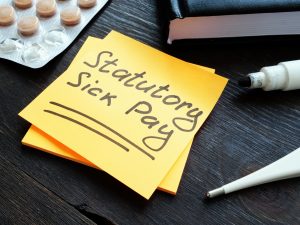Investment Properties under FRS 102 The Financial Reporting Standard applicable in the UK and Republic of Ireland
FRS 102 is the principal accounting standard applied in the financial reporting regime of the UK, setting out the financial reporting requirements for entities which are not applying the reduced disclosure framework under FRS 101, the Micro entity regime FRS 105 or EU-adopted IFRS.
This article will provide a reminder of some of the key points to consider when accounting for investment properties under FRS 102. It is not an exhaustive list of all points, for that you will need to refer to the full text in section 16 of the standard.
FRS 102 defines an investment property within its glossary of terms as –
a property (land or building, or part of a building, or both) held by the owner or by the lessee under a finance lease to earn rentals or for capital appreciation or both, rather than for:
a. Use in the production or supply of goods or services or for administrative purposes, or
b. Sale in the ordinary course of business.
In considering the above definition, if a business has property which generates rental income, then that property will fall under the definition of an investment property. Given that the definition also includes the term land and buildings, properties which are being developed for use in the future as investment properties and land held for the purpose of long term capital appreciation can also meet the above definition and are thus accounted for under section 16 ‘Investment property’ of FRS 102.
Please note that where the property is owner-occupied, this is accounted for under Property, Plant and Equipment (section 17) which varies from the treatment under section 16.
Measurement under FRS 102
• Investment properties are initially recognised at cost, which includes the purchase price of the property and any expenditure directly attributable to the property e.g. legal fees and stamp duty.
• Where payment for the property is deferred beyond normal credit terms then the initial cost is the present value of all future payments.
• The initial cost of a property interest held under a lease and classified as an investment property is accounted for as a finance lease even if the lease would be classified as an operating lease under section 20 on lease. The property would be recognised at the lower of the fair value of the property and the present value of the minimum lease payments. A corresponding liability is recognised within creditors.
• In subsequent periods the investment property is measured at fair value at each reporting date. Changes in the fair value are taken through the profit and loss account as opposed to being taken directly the revaluation reserve, which was the case under the old UK GAAP.
• With respect to intra-group investment properties where the investment property is rented to another group entity. The entity that rents the property to its group company can account for the property either –
1. At fair value with the changes in the fair value being recognised in the profit and loss account in accordance with section 16; or
2. By transferring them to property, plant and equipment and applying the cost model in accordance with section 17.
Fair value gains & non-distributable reserves
• Fair value gains on investment properties are not realised gains and thus are non-distributable profits.
• It is important therefore to ensure that a record is kept of the net cumulative fair value gains to prevent non distributable profits from being distributed in error. A method of recording would be to transfer the net cumulative fair value gains from the profit and loss reserves to a separate non-distributable result for the purpose of presentation.
Deferred tax
• Section 29 ‘Income tax’ of FRS 102 requires deferred tax to be recognised on fair value adjustments to investment properties using the tax rates and allowances that would apply to the sale of the asset.
• If the company has no plans to sell the investment property in the foreseeable future, the deferred tax us calculated using the tax rates that have been enacted or substantially enacted as at the reporting date. the company can thus use a rate of 17%, being the corporation tax rate commencing on 1 April 2020.
The Financial Reporting Council have undertaken its triennial review of FRS 102 resulting in some changes which take effect for periods starting on or after 1 January 2019. The impact on this review on investment properties will be examined in a future blog.
SRC-Time Ltd
2nd Floor
Stanford Gate
South Road
Brighton
BN1 6SB
T: +44 (0) 1273 326 556
F: +44 (0) 1273 733 827
E: info@src-time.co.uk

